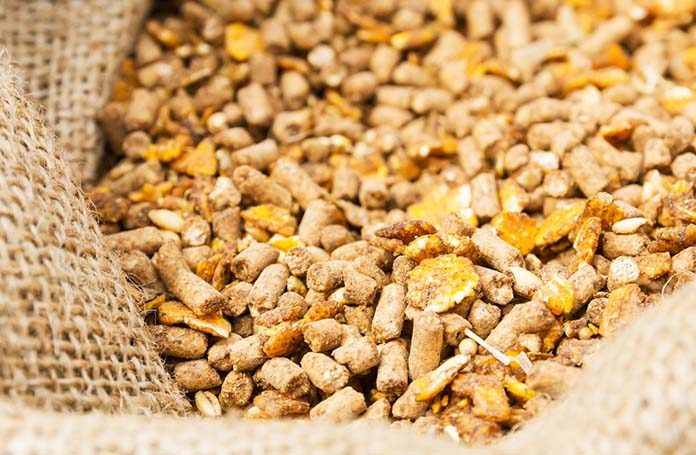
This brief paper attempts to review the history of development of the mechanistic theories for NSPases and how this has possibly delayed advances.
NSPase feed enzymes have been used commercially since the mid to late 1980s in Northern Europe where the inclusion of significant quantities of barley in poultry rations was made possible with the supplementation of B-glucanases. Ordinarily the use of barley resulted in wet and sticky litter/faeces and poor performance and thus its use was limited but both of these problems were overcome with the use of the enzyme, and indeed in many cases performance surpassed that of diets based on wheat, the cereal of choice in these regions.
Subsequent development of xylanases for wheat-based diets resulted in significant but slightly less evident performance and litter responses with commercial adoption taking off rapidly in the early 1990’s. Extension of NSPases into maize-based diets resulted in lesser improvements in performance and no discernible improvements in litter/faeces humidity. With less overt evidence of a benefit, the uptake of these enzymes was thus relatively slow in maize based diets. Nevertheless, throughout the world, most poultry diets contain an NSPase in some form today.
Pre-dating and during commercial development a lot of work was undertaken to understand how these enzymes functioned and resulted in the development of several theories which at the time were seen to be competing but with hindsight were all contributory, but to varying degrees. It is the adherence of individual research groups to specific theories which has likely hampered development of NSPases as research was conducted to confirm or reject one theory at the expense of another rather than to investigate potential alternative mechanisms which were not “in vogue”.
Mechanisms proposed
1. Viscosity
Proposal
Soluble NSP, if of sufficiently large molecular size, can aggregate and from viscous solutions which reduce the rate of diffusion of solutes, particularly large solutes such as fat micelles. Viscous solutions are also difficult to mix, making the formation of emulsions via violent peristaltic motion less effective. Cereals which lead to viscous intestinal contents thus result in reduced rates of digestion of all nutrients, particularly saturated fats which require significant emulsification.
Cereals vary in their viscosity potential with the ranking being maize<wheat<barley<rye. Increased viscosity leads results in greater delivery of undigested starch and protein to the large intestine which can result in bacterial overgrowth.
The variability in response to NSPases within and between studies is often well explained by the initial viscosity of the grain employed. Even within a cereal type, the range in the viscosity determined at the intestinal levels can be large, with the more viscous grains tending to respond more to the relevant enzyme.
The reduction in viscosity results in the improvement of all nutrients, particularly fat, as noted above. Improvements in digestibility of fat are almost universally noted and given the majority of dietary fat is not encapsulated within the cereal cell walls, this mechanism is better suited to describe the response noted. Moreover, when amino acid digestibility has been determined, the improvements noted on the inclusion of an NSPase has been shown to reflect a constant benefit on all dietary amino acids, not just those most prevalent in the cereal.
Weaknesses
The negative effect of high viscosity diets is far less apparent and in some cases eliminated in germ free birds or in birds treated with very high levels of antibiotics. The suggestion that reduced diffusional rates per se are responsible directly for the reduction in performance may therefore not be correct if the negative effects are reliant on an unrestricted microbiome.
2. Cell wall
Proposal
Cereal cell walls are constructed of polymeric NSP which are not digested by the monogastric. After feed milling and processing and passage through the gizzard, many cells are still completely intact and as a result their contacts “protected” from digestion. Provision of enzymes which are able to degrade these cell walls results in a greater proportion of the diet being accessible for digestion and hence performance improves.
Weaknesses
As noted above, the profile of the nutrients released when an NSPase is employed does not reflect nutrients entrapped within the intact cereal cells. Moreover attempts to simulate digestion of cell walls in vitro have not been successful in demonstrating any degree of cell wall perforation in a reasonable time frame or at a commercially relevant dose. Microscopy of the intestinal contents has shown what appears to be cell wall disruption as early as the crop with most activity completed by the duodenum/jejunum which very much restricts the time frame in which the enzymes can act. Complete perforation/penetration is therefore highly unlikely given the doses of enzyme employed commercially. It is still possible that weakening of the cell walls rather than complete perforation plays a role in allowing more rapid influx of digestive enzymes but total hydrolysis is clearly a very different proposition.
3. Prebiotic
Proposal
NSPases partially degrade insoluble and soluble NSP to smaller, oligomeric compounds which are not absorbed by the animal but fermented by beneficial residents of the microbiome which convert these compounds to SCFA. These provide the bird with an energy source, control pathogen populations, and generate entero-hormonal signals to delay gastric emptying. It is this latter effect which probably accounts for the cell wall destruction noted and discussed in the section above and as a consequence of prolonged gastric digestion, enhanced digestion of the whole diet.
Weaknesses
When the oligosaccharides are fed directly, it is noted that the quantities needed to elicit a response are very small, much too small to generate the quantities of SCFA observed. Moreover, there is a delay in the response in that suggests that the microbiome have to adapt to the sugars being fed before they can use it. Recent work has indeed noted that feeding a xylanase or adding AXOS to the diet accelerates the development of a microbiome which is capable of digesting more intransigent NSP such as xylan and cellulose. Thus the oligosaccharides may not be quantitatively responsible for the responses noted, but simply the trigger for bacteria to develop a more efficient fibre-degrading repertoire of enzymes.
Consequences?
It is likely that all 3 mechanisms play some role in the responses noted (or lack thereof) and all should be considered simultaneously. Focusing on any one of the mechanisms noted above at the expense of the others results in a siloed approach to research with little chance of significant progress being made. For example, the structure of the viscous arabinoxylans differs from the insoluble, and as a result the type of enzyme selected for exclusively targeting the one may yield little effect on the other.
Adherence to the cell wall theory simply focusses on cell wall destruction and ignores the structure and size of the oligosaccharides generated as a result of cell wall hydrolysis.
Thus more complete cell wall destruction may be accompanied by more complete degradation of oligosaccharides down to monomeric sugars, and thus degradation of the prebiotic signal. Since most of the oligosaccharides generated likely are derived from the soluble fibre components, should we be considering viscosity as an index of the potential prebiotic signal that can be produced?
Recent work has suggested that whilst a range of NSPases can generate tetra-, tri- and di-xylo-oligosaccharides from barley, wheat and oats, no such products were generated from the corn source selected. Whilst there are several papers demonstrating the variation in response to an NSPase when added to several samples of corn, none has considered whether this is down to differential oligosaccharide release, viscosity reduction and/or cell wall perforation.
Finally, SEM work has shown that when corn is exposed to commercial doses of a xylanase, the cell walls are not dissolved but they are pitted. Such pitting is recognised in ruminant work as being significant in reducing the lag phase in fibre fermentation by accelerating bacterial attachment, Thus a fourth and as yet unconsidered mechanism is that NSPases may be increasing the digestion rate of fibre by making it more accessible to the fibre degrading microbiome.
If all 4 mechanisms play a role in determining the response of a cereal to a given enzyme, then the search for more consistent enzymes for corn soy diets has to consider all 4 activities at the same time. To date this has not been the case. Most research on NSPases is designed to prove the preferred hypothesis which ultimately restricts progress.
References are available on request
From the 2019 MPF Proceedings – Midwest Poultry Federation Convention

















